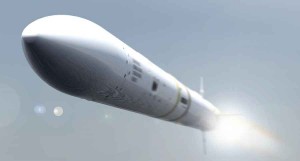Of course, It is not only MBDA that is looking at the Indian market which has one of the world’s largest defence budgets and is also a leading defence equipment importer. However, I want to stress here that our approach regarding India is quite different. Yes, we have a number of important export campaigns underway, but we are very much looking to the long term, towards creating in-country business partnerships and going far beyond the traditional buyer seller relationship.
India has clearly stated that it wants to reduce its reliance on defence imports, that it wants to establish a degree of defence sovereignty. To do so it needs to build up its domestic industry with the necessary technology skills and experience. MBDA has the support of its national governments to transfer technology at the most advanced level. So even though we have great hopes for a number of products that we are proposing to meet immediate Indian needs, our main ambition is to work hand in hand with Indian industry, to bring our skills and technology to a future generation of defence equipment that will be developed and produced in country.
What is the status of MBDA’s proposal of selling Marte ER to India?
Marte ER is evidence of MBDA’s skills in evolving the capabilities of an existing family of weapons. While keeping many of the characteristics of the existing Marte family (therefore being interoperable with the Marte MK2/S for example), the high sub-sonic Marte ER will be equipped with a turbo-jet engine giving it a range of well over 120km, enabling it to engage enemy vessels well over the horizon. Other enhancements in this new extended range addition to the Marte family sees the missile’s terminal guidance system optimized with an advanced active radar seeker with adaptive search patterns, excellent discrimination and resistance to ECM. Featuring 4D waypoints including altitude and time for simultaneous time on target attack, Marte ER will offer rotary and fixed wing aircraft, ships and land based coastal defence systems a significant operational advantage.
With this operational flexibility we are able to propose this system for a number of current Indian Navy requirements.
With this operational flexibility we are able to propose this system for a number of current Indian Navy requirements. At this moment I do not want to enter into too many details. However, we have already talked about the potential for the NH 90 and the Indian Naval Multi Role Helicopter. In addition, with a requirement for a land based mobile coastal defence system and a ship launched medium range anti-ship missile, there are clearly further opportunities for Marte ER. At around 300kg, Marte ER is less than half the weight of comparative missiles in this range class. Such a weight saving gives a maritime helicopter over an hour of extra flight duration, a significant operational advantage.
What is your view on the offset obligations when doing defence business in India?
Wherever in the world where MBDA carries out business we know we have to adapt to the customer’s requirements, offsets or otherwise. Of course in some cases determining and putting in place suitable offsets can be extremely demanding but we always strive to meet the stipulated obligations.
As you know, India recently revised its offset policy. I believe this was a positive step given India’s geo-strategic position which bring with it the twin requirements of acquiring some of the world’s best defence equipment – the Rafale MMRCA decision is a good case in point where the direct offset will be 50% rather than the usual 30% for projects over RS 300 million – as well as working towards the development of its own indigenous defence industry capability. By only accepting direct defence related offsets and providing a 1.5 multiplier to boost the activities of SMEs, and by very clearing stating what constitutes an acceptable offset under the new policy, I think India’s strategic interests from both a strategic equipment as well as an industrial point of view will be well served.





